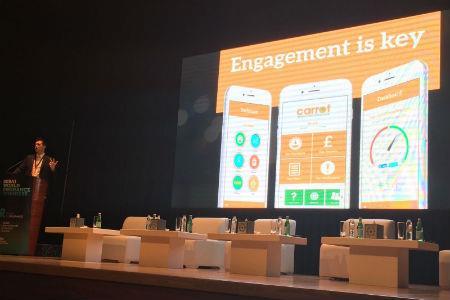When disruptors use their tools to provide solutions

When an industry disruptor decides to take solving industry problem into their own hands powerful solutions tend to be born. This is exactly what happened when Trak Global, the makers of telematics devices created Carrot.
Carrot insurance uses an innovative model that allows young drivers to not only pay less for their insurance, but also to earn cash rewards over time for better driving.
Trak Global Group marketing director Andrew Brown-Allan explained its concept to delegates at DWIC, and he spoke with Global Reinsurance editor Samera Owusu Tutu about what has been achieved so far.
Can you tell me a bit about Carrot?
Carrot was founded in 2012 at the beginning of the most recent push towards using technology to try and improve insurance in the context of both price and experience for customers who had a level of distress around the premiums that they were paying - and nowhere was that more prevalent than with drivers.
We weren’t the first to market with telematics, but in our observation, what others had done was inadvertently positioned the presence of the black box in the driver’s car as a disincentive to driving badly. So in effect if you drive badly we will know about it and you will be penalised.
What we have done to counter that is say if you’re a good driver your insurance premium could do down.
We wanted to spin the concept that young drivers were bad drivers and bad risks on its head. Our view was to encourage them to drive well instead of penalising them for driving badly. We use incentive and reward as the lever to improve driver behaviour and litigate risk.
What has been the impact so far?
The customers enjoy receiving cash rewards, and we have now broken the £3m barrier of value return to our customers. The other great news is we’ve reduced our accident frequency. Our method of intervention and getting young drivers engaged in their data and in the art of driving more safely means we’ve got a significantly reduced accident frequency when you look at our results against an identical match from a non-telematics young driver proposition.
As a business, we have road safety very close to our hearts because one of our founders lost his son in a car crash aged 18. We’ve lived through the agony vicariously through him and know the impact of this tragedy.
It really matters; and it’s really great when you’re in a situation where the consumer benefits, we as the provider benefit, and in turn the insurer benefits, all because you’re able to write young driver insurance positively, whereas pre-telematics and pre-intervention that just wasn’t possible.
Could we be moving from a model of insurance to a model of ‘ensurance’, where the client’s risk mitigation is very much a part of the process?
The technology in and of itself is just an enabler. Similarly, giving people feedback on their scores and giving them self-actualising data about themselves is interesting for a time. But what is really crucial is getting people engaged in their data and in their feedback, and proactively feeling motivated to self-manage their risk. And in the case of a young driver of course, you’ve got the in-house risk-manager of a parent in many cases, whereby they themselves are dangling a carrot to say look we’ll pay for your insurance on the proviso that from time-to-time we can see how you’re doing in terms of your driving score.
So you’re right. We are moving towards a shift in the way that insurance is sold and serviced; it’s becoming much more of an interactive process. This is about insurance as a service, and as we move towards things like mobility as a service, that’s going to force us to look at different models for the way that not only people travel, but also how we insurer that mobility across many different modes of transport. There are some changes afoot that we need to be very aware of.







No comments yet